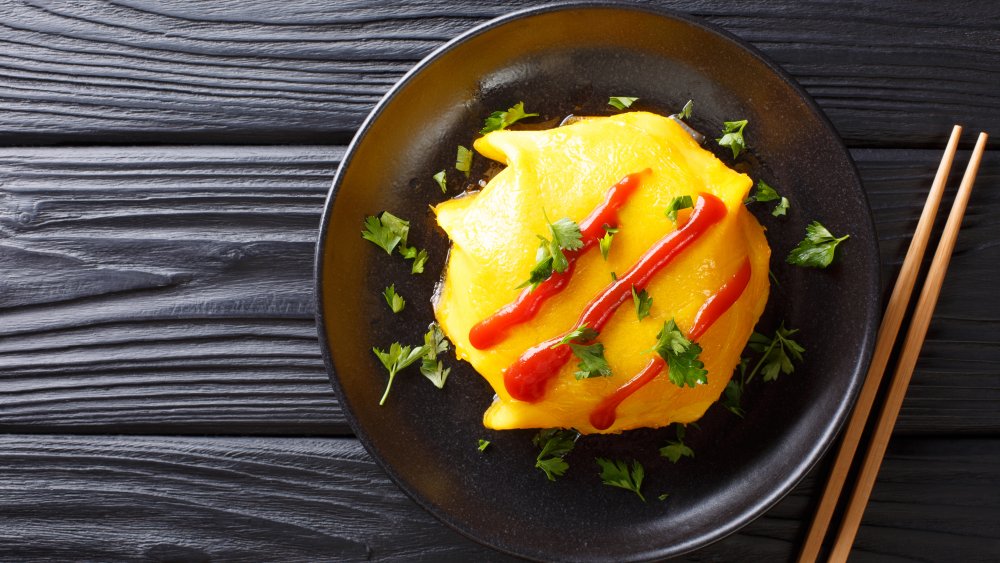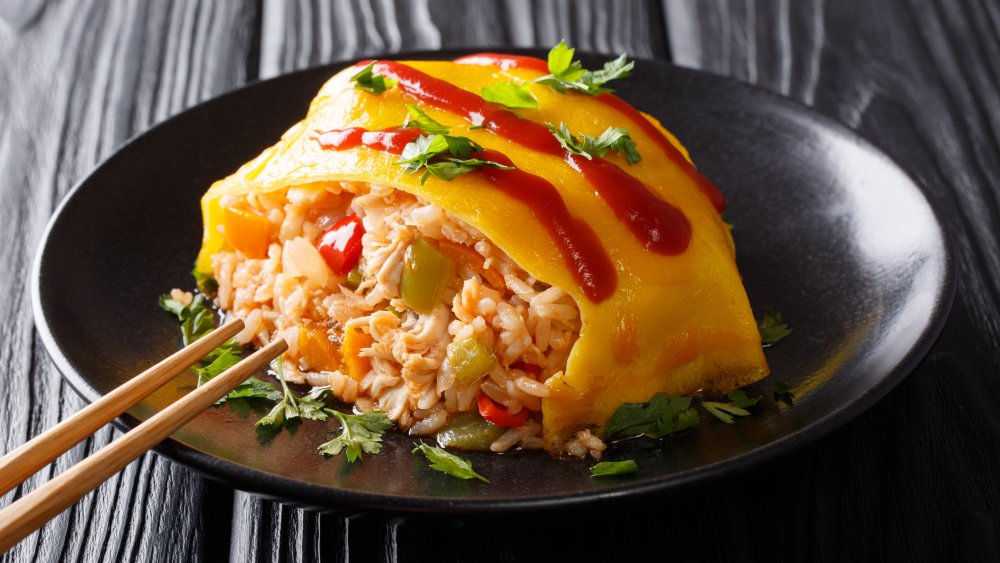Why You Should Be Making Omelets The Japanese Way
Eggs are one of those powerful foods with a seemingly endless list of recipe possibilities. In Italy, they can be cooked into hearty frittatas with Parmesan. In Mexico, they can be served over fried tortillas for chilaquiles. But in Japan, eggs are especially omnipresent. Japanese cooks are creative: They steam eggs into custards with mushrooms and shrimp. They scramble eggs with crabmeat and spoon the mixture over steamed rice. They cook the meticulous tamagoyaki— a compact, tightly rolled omelet (via Taste Atlas).
But nothing is quite as striking — and globally popular — as the ketchup-y, creamy, carb-filled omurice. Even the name is adorable and self-explanatory: Japanese cooks began combining omelets with fried rice to create a dish so ingenious that it's popping up in restaurants from Los Angeles to New York and D.C. In short, omurice consists of fried rice that's been masterfully encased inside a sunshine-yellow omelet. It's playful, pretty, and once you can manage to craft the dish yourself, you'll forget your old eggs-and-toast routine altogether.
How it all began
Omurice, also known as omuraisu, is one of many innovative dishes that stemmed from yōshoku: a culinary genre that recreated Japanese cuisine using western influence. The cuisine came about sometime after Japan's isolationist era ended in 1854. In 1872, Japan's Emperor Meiji began encouraging citizens to eat meat after the country had spent centuries avoiding it (via The New York Times). Gradually, in the decades that followed, more Japanese citizens were exposed to dishes conceived in relatively western countries, like spaghetti, hamburgers, curries, and, of course, ketchup.
Needless to say, life was changing in Japan. So was the menu.
By 1900, the restaurant Rengatei began serving rice and omelet together on its menu. And by 1925, the restaurant Hokkyokusei started enclosing ketchup-fried rice inside its omelets, according to The Japan Times. While there are countless variations of omurice, one popular version involves rice fried with carrots, onions, chicken thighs, and ketchup. The omelet is simple — eggs, salt, milk, and butter — but it's a challenge to produce a nicely shaped, perfectly cooked sheath of scrambled egg to accompany the rice.
Many cooks produce a neat, encased omelet that's creamy on the inside, and solid on the outside. They omelet is placed over the rice, and it's deftly split open with a knife, causing a gorgeous, photogenic outpouring of egg curdle (via Food52). The dish is usually topped with ketchup (yes, more ketchup), mayo, or some form of brown gravy, according to Atlas Obscura. Different? Yes. Worth trying? Definitely.

